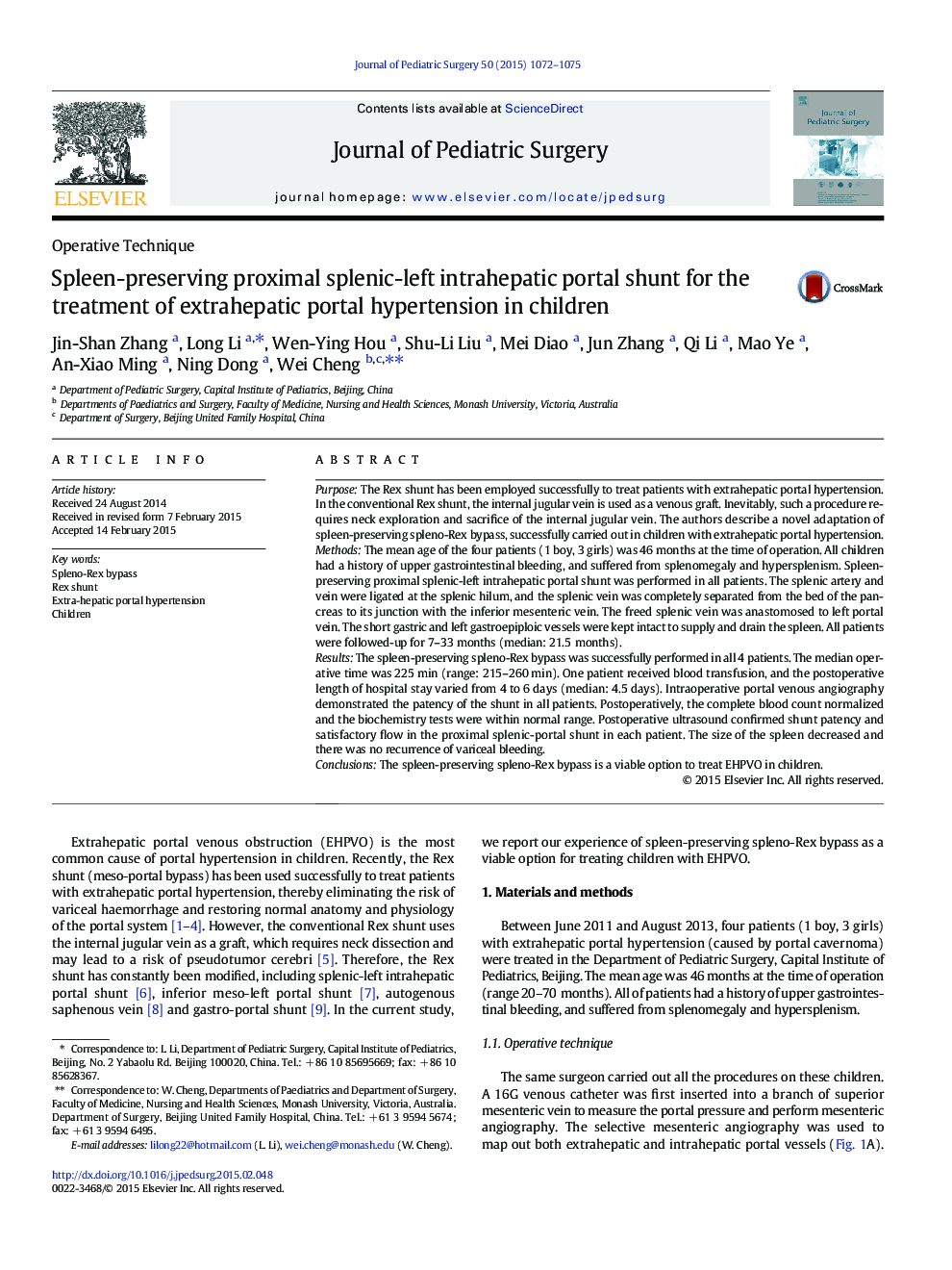| Article ID | Journal | Published Year | Pages | File Type |
|---|---|---|---|---|
| 4155071 | Journal of Pediatric Surgery | 2015 | 4 Pages |
PurposeThe Rex shunt has been employed successfully to treat patients with extrahepatic portal hypertension. In the conventional Rex shunt, the internal jugular vein is used as a venous graft. Inevitably, such a procedure requires neck exploration and sacrifice of the internal jugular vein. The authors describe a novel adaptation of spleen-preserving spleno-Rex bypass, successfully carried out in children with extrahepatic portal hypertension.MethodsThe mean age of the four patients (1 boy, 3 girls) was 46 months at the time of operation. All children had a history of upper gastrointestinal bleeding, and suffered from splenomegaly and hypersplenism. Spleen-preserving proximal splenic-left intrahepatic portal shunt was performed in all patients. The splenic artery and vein were ligated at the splenic hilum, and the splenic vein was completely separated from the bed of the pancreas to its junction with the inferior mesenteric vein. The freed splenic vein was anastomosed to left portal vein. The short gastric and left gastroepiploic vessels were kept intact to supply and drain the spleen. All patients were followed-up for 7–33 months (median: 21.5 months).ResultsThe spleen-preserving spleno-Rex bypass was successfully performed in all 4 patients. The median operative time was 225 min (range: 215–260 min). One patient received blood transfusion, and the postoperative length of hospital stay varied from 4 to 6 days (median: 4.5 days). Intraoperative portal venous angiography demonstrated the patency of the shunt in all patients. Postoperatively, the complete blood count normalized and the biochemistry tests were within normal range. Postoperative ultrasound confirmed shunt patency and satisfactory flow in the proximal splenic-portal shunt in each patient. The size of the spleen decreased and there was no recurrence of variceal bleeding.ConclusionsThe spleen-preserving spleno-Rex bypass is a viable option to treat EHPVO in children.
